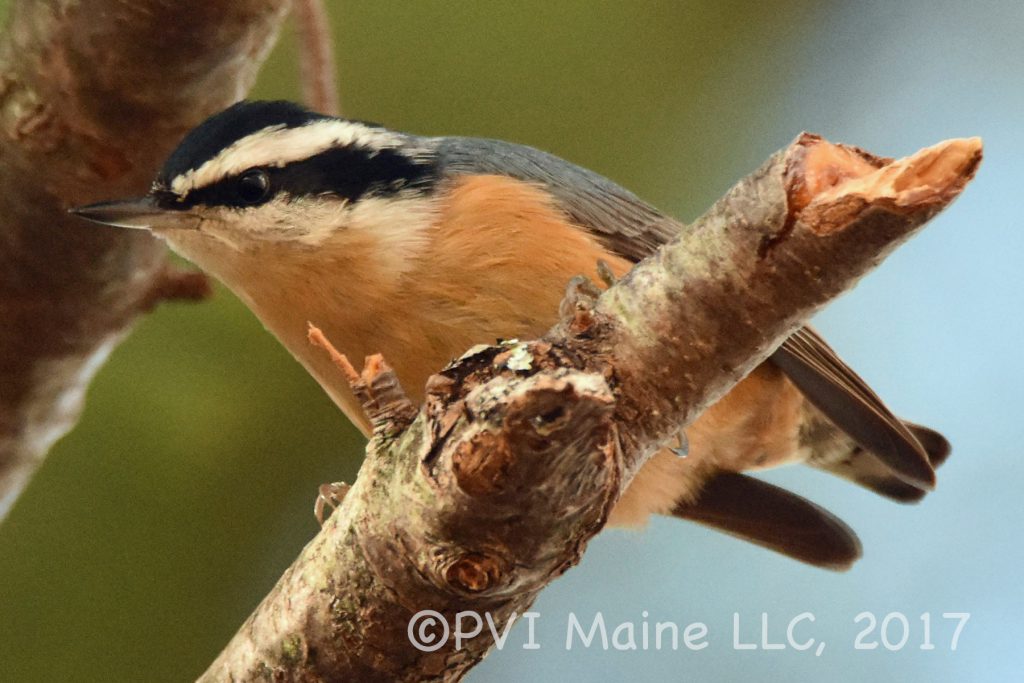
The Red-breasted Nuthatch (Sitta canadensis) is a small songbird that measures approximately 4.5 inches in length and weighs around 0.3 ounces. It has a distinctive red patch on its breast and a blue-gray back with black and white stripes on its wings and tail. Its bill is short and straight, ideal for cracking open nuts, and its feet are adapted for climbing trees.

The Red-breasted Nuthatch can be found in coniferous forests throughout much of North America, including Alaska, Canada, and the western United States. During the winter months, some populations of Red-breasted Nuthatches will migrate south to areas with milder climates, including parts of the southern United States and Mexico.
One of the distinguishing characteristics of the Red-breasted Nuthatch is its vocalization. It has a nasal call that sounds like “yank-yank,” which can often be heard in the forest canopy. In addition, it has a high-pitched song that sounds like “wee-wee-wee,” which can be heard during the breeding season.
The Red-breasted Nuthatch is a cavity nester, meaning it will excavate its nest in a tree cavity or use an existing hole. It will also use nest boxes if available. The female will lay 4-9 eggs, which she will incubate for about two weeks. The young will fledge from the nest after about three weeks.

During the winter months, the Red-breasted Nuthatch will often visit bird feeders, particularly those with sunflower seeds and suet. It is an energetic and acrobatic bird that is fun to watch as it moves up and down tree trunks in search of food. Overall, the Red-breasted Nuthatch is a charming and interesting bird that is sure to capture the attention of birders and nature enthusiasts alike.

